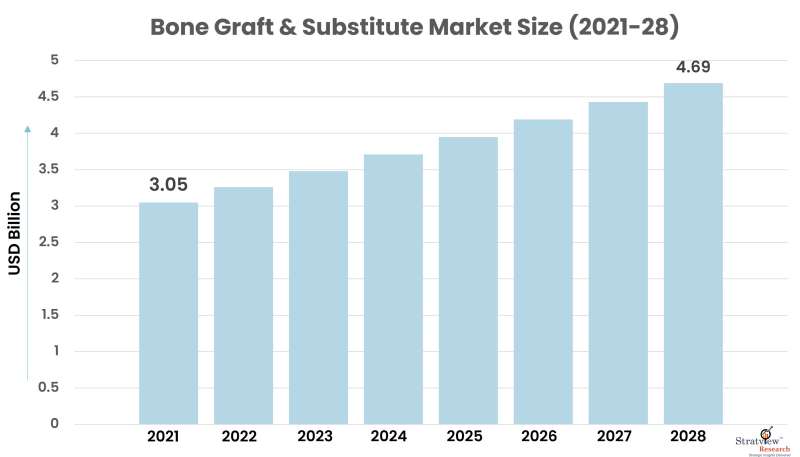Introduction:
The Bone Graft and Substitute market, a critical sector within the broader field of orthopedics, is experiencing unprecedented growth and evolution. As medical advancements and technological innovations continue to shape the landscape, the global impact of these developments is becoming increasingly apparent. The Bone Graft and Substitute Market is projected to grow from USD 3.05 billion in 2021 to USD 4.69 billion by 2028 at a CAGR of 6.24% during the forecast period of 2022-2028. This article delves into the dynamics of the Bone Graft and Substitute market, exploring key trends, challenges, and the transformative influence it holds in the realm of healthcare.
The Current Landscape:
The demand for bone grafts and substitutes has surged in recent years, fueled by an aging population, an increase in musculoskeletal disorders, and a growing awareness of the importance of orthopedic health. Traditional bone grafting methods, such as autografts, have limitations, prompting a shift towards more advanced solutions. This shift is evident in the rise of synthetic substitutes, allografts, and xenografts, each offering unique advantages in terms of safety, efficacy, and availability.
Technological Innovations:
The Bone Graft and Substitute market has witnessed a wave of technological innovations that are reshaping treatment approaches. Advanced materials, including bioactive ceramics and growth factors, are enhancing bone regeneration capabilities. 3D printing technology is enabling the production of customized implants, ensuring a better fit and improved patient outcomes. These innovations not only streamline surgical procedures but also contribute to faster recovery times and reduced postoperative complications.
Market Trends and Challenges:
The market's dynamic nature is reflected in the emergence of several trends. Increasing collaboration between pharmaceutical companies and research institutions is fostering the development of novel graft materials. Additionally, a growing focus on minimally invasive procedures is driving the demand for injectable bone substitutes, presenting a paradigm shift in the approach to orthopedic surgeries.
However, challenges persist. Regulatory complexities, ethical concerns surrounding the use of certain graft sources, and the high cost of advanced technologies pose hurdles to widespread adoption. Addressing these challenges is crucial for sustained market growth and ensuring equitable access to cutting-edge orthopedic solutions.
Future Prospects:
Looking ahead, the Bone Graft and Substitute market is poised for further expansion. Ongoing research in regenerative medicine, coupled with advancements in biotechnology, holds promise for even more sophisticated grafting solutions. As the market becomes increasingly competitive, companies are likely to focus on strategic partnerships, mergers, and acquisitions to stay at the forefront of innovation.
In conclusion, the dynamics of the Bone Graft and Substitute market are indicative of a transformative period in orthopedics. From technological breakthroughs to global economic influences, the market's impact extends far beyond the surgical suite. As stakeholders continue to collaborate and invest in research and development, the future holds exciting possibilities for revolutionizing orthopedic care on a global scale.





Comments